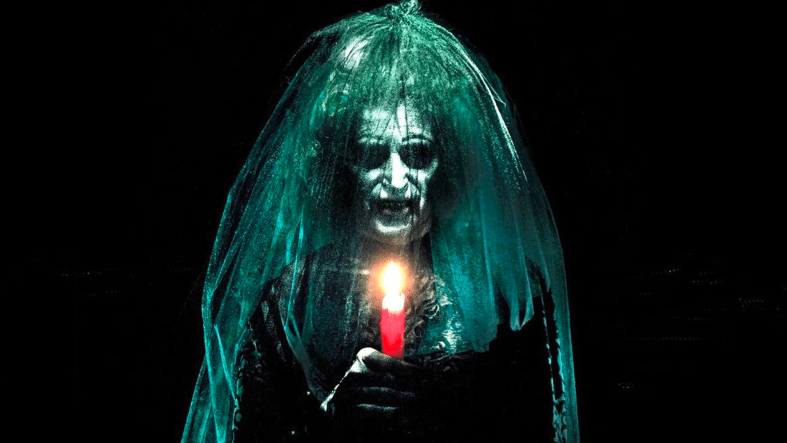Blumhouse Isn’t A24 and They Don’t Need to Be

As a kid, I was obsessed with Darkness Falls. Jonathan Liebesman’s feature was a truncated, uneven hodgepodge of different horror stylings. Part slasher, part ghost story, part high concept January horror. And, well, I loved it, largely because I saw it exactly when I should have. I didn’t see it as an adult with years of horror history under my belt, but in 2003 when horror amounted to whatever the local Blockbuster had available to rent. Gateway horror is conceptually that. It always has been. Gateway horror doesn’t need to be groundbreaking or subversive, an esoteric, elevated act of genre rebellion. It needs to be fun and accessible. Blumhouse, for years, has been delivering just that.
The modern horror scene is too easily dismissed as the Blumhouse Productions scene. I’ll concede that Blumhouse enjoys a disproportionate monopoly on modern mainstream horror, especially theatrical horror. The genre, of course, is more diverse than that. Departing Seniors, which was released earlier this year, is poised to be one of the freshest slasher movies of the decade. No one but the most avowed of horror fans have seen it. Yet, I understand why general audiences haven’t seen it. There’s no marketing, no push. For anyone not deeply immersed in the horror scene, Departing Seniors might as well not exist. Last Night at Terrace Lanes was fantastic. If you didn’t catch it when it charted on the rental charts when released, it’s all but buried now, destined to irregularly appear organically on streaming services.
Also Read: ‘Imaginary’ Review: A World Of Little Imagination
For general audiences to become horror fans, they first need to get acclimated to the genre. Gateway horror, by definition, is the inverse of gatekeeping. Blumhouse, while an increasingly corporate entity, still endeavors to accomplish just that. I enjoyed Imaginary more than most while still accounting for why so many seasoned horror veterans found it hard to love. At the same time, Imaginary can be a not-great movie (or a good one, if you’re me) and an excellent piece of gateway horror at the same time. PostTrak and CinemaScore were more positive. Imaginary might not be a theatrical success, but it’s going to go over like gangbusters at sleepovers everywhere in the coming months.
Blumhouse Productions’ low-budget model, still their primary focus, first began in 2007 with their acquisition and release of Paranormal Activity. Since then, they’ve produced Insidious, Sinister, The Purge, Oculus, Ouija, Creep, The Visit, Split, Get Out, Happy Death Day, Unfriended, Halloween, Ma, The Invisible Man, The Hunt, Freaky, The Vigil, The Black Phone, Sick, Five Nights at Freddy’s. Those are just some of the (nearly infinite) horror offerings, not accounting for television, games, and non-genre fare. Not to mention the sequels. Nine of those titles have had sequels released. Several more have sequels in the pipeline.
Even the most contrarian horror fan has to concede at least one of the above titles is part and parcel with the modern genre scene, a seminal release that has changed the trajectory of twenty-first-century horror. Even if you don’t like them—which, fair, not everything works for everyone—you’d be hard-pressed to argue, say, the supernatural horror of today isn’t directly tethered to James Wan’s Insidious.
Also Read: ‘Halloween’ TV Series: Beloved Horror Franchise is Set for “A creative reset”
Blumhouse remains part of the larger conversation, then, and expectedly, they’ve centered themselves in an ongoing debate about how the genre morphs and evolves. They haven’t been perfect. While I’m thrilled Atomic Monster’s—a collaboration between Jason Blum and James Wan– first release, Bryce McGuire’s Night Swim, gave a burgeoning filmmaker the chance to expand on a well-received short film, I thought it illustrated the worst modern horror impulses. No wonder Mary Beth McAndrews, in her review of the film, called it, “the cinematic equivalent of a belly flop.”
Worse still, Blumhouse has yet to even marginally reconcile with Jason Blum’s ill-conceived comment about women directors. He remarked, “There are not a lot of female directors period, and even less who are inclined to do horror” back in 2018. In the six years since, the Blumhouse slate—especially the theatrical slate—is still principally helmed by men.
Which is to say, I’m not here to defend Blumhouse the corporate entity, but instead Blumhouse the house of horrors. In that regard, they’re doing remarkable work. Their offerings might range in quality, but they’re targeting horror fans across the spectrum. Whether that’s tykes eager for their first fright or more hardened horror fans, they’re committed to expanding the meaning and reach of horror beyond where it has been before.
Also Read: ‘Ghostbusters: Frozen Empire’ Review: I Ain’t Afraid Of These Ghosts
On any given weekend, there’s likely a new Blumhouse horror series or movie available in theaters or to stream somewhere. Okay, that’s an exaggeration, but Blumhouse Productions crafted eight different horror releases in 2023, one of which—Nahnatchka Khan’s Totally Killer—ranked among the best of the year.
So, while it’s easy to see something like Imaginary (which, again, I liked) or Night Swim and decry Blumhouse as the progenitor of the death of horror (spoken like Anna Paquin in Scream 4), it’s a lot harder to contend that the genre isn’t in a better space today because of them. That doesn’t make them the genre, but their reach and efficacy are more nuanced than they’re often given credit for.
For me, horror is exploratory. I don’t want to just watch good horror movies. I want to watch bad ones. Okay ones. Rough ones that yield promise. With Blumhouse, at the very least, I never know which I’m going to get. And as a horror fan, there are few things quite as exciting as that.
Categorized:Editorials

